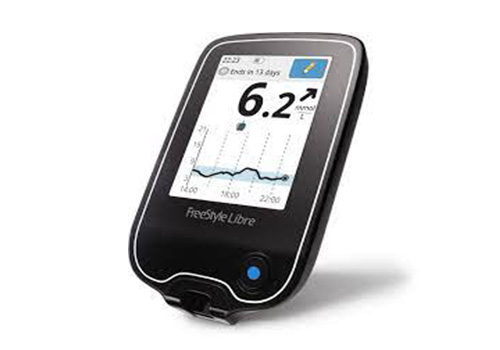Abbott Freestyle Libre and Freestyle Libre 2
- Checks glucose levels with a scan instead of a traditional finger-prick.
- A simplified method of checking glucose level with high levels of accuracy
- Small in size, easy to apply and wear, and is water-resistant for exercising, showering, and swimming.
- It can be used over clothing for added convenience.

How This Product Can Help You
Learn why our exceptional customer service has made us the trusted choice for patients, medical professionals, and caretakers alike.
Learn why our exceptional customer service has made us the trusted choice for patients, medical professionals, and caretakers alike.
Learn why our exceptional customer service has made us the trusted choice for patients, medical professionals, and caretakers alike.
FAQS
A. A CGM is a Continuous Glucose Monitor is a device that automatically tracks blood glucose levels at any time of day, letting you see your glucose levels immediately.
You can review how your glucose changes over a few hours or days to see trends.
A. A CGM works through a tiny sensor inserted under your skin, usually on your belly or arm. Most CGMs report blood sugars every 5 minutes.
The sensor measures your interstitial glucose level, which is the glucose found in the fluid between the cells.
A transmitter wirelessly sends the information to a monitor. The monitor may be part of an insulin pump or a separate device, which you might carry in your pocket or purse. Some CGMs send information directly to smartphones/tablets.
Several models are available and are listed in the American Diabetes Association’s product guide.
You still need a finger-stick glucose test twice a day to check the accuracy of your CGM against a standard blood glucose meter.
A. CGMs are always on and recording your glucose levels, regardless of what you’re doing.
CGMs can help people with diabetes make informed decisions about food choices, exercise, and other aspects of diabetes management by removing the guesswork about daily patterns and fluctuations.
Many CGMs have special features that work with your glucose readings to:
– Sound alarms when your glucose levels get too low or too high
– Track your meals, physical activity, and medicines alongside your glucose levels.
– Download your data to a computer or smart device to see your glucose trends.
– Some models send information to another person’s smartphone, e.g. your partner or caregiver.
– CGMs help detects trends in blood glucose levels. For example, they can show spikes or dips in blood glucose when it may be inconvenient to check sugar levels, such as during the early morning hours.
– CGM’s eliminate the need for numerous finger pricks.
A. Most people who use CGMs have type 1 diabetes, however, more and more people with type 2 diabetes are using CGMs.
CGMs are approved for use with a doctor’s prescription. Your doctor may recommend a CGM if you: – Are on intensive insulin therapy. – Have hypoglycemia unawareness. – Often have high or low blood glucose
Your doctor may suggest using a CGM system all the time or only for a few days to help adjust your diabetes care plan.
A. Unfortunately, because each insurance provider has a different criteria, it’s difficult to provide an estimated time to complete pre-authorization.
A. Every insurance company has different criteria for an insulin pump or CGM. However, a general rule of thumb is to make sure you see your doctor at least twice a year. If you want to know the exact criteria for an insulin pump or CGM, you are welcome to contact our preauthorization team at 801-942-8582 option 5 or contact your insurance company directly.

